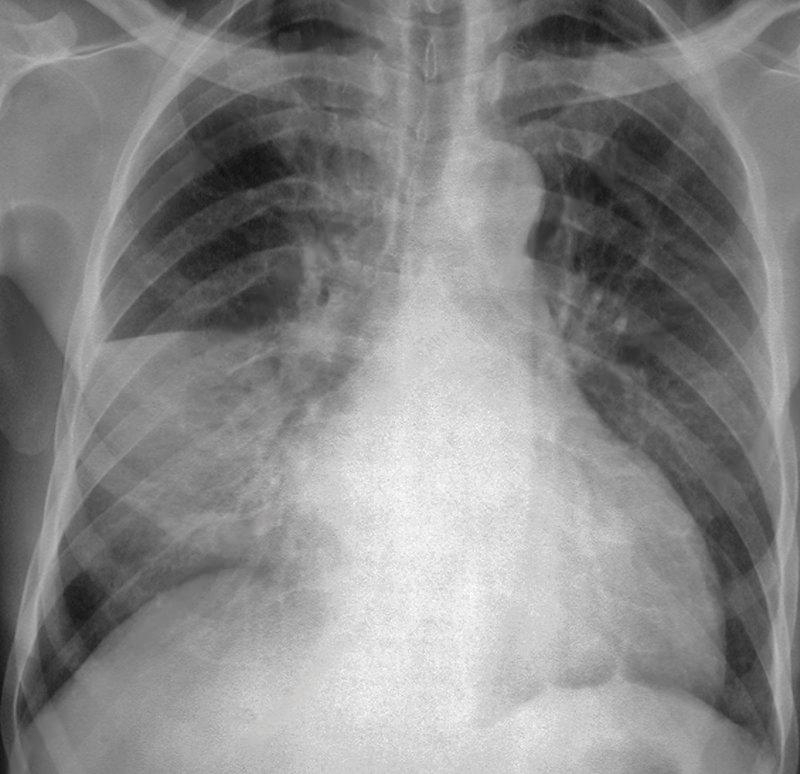Pneumonia is a common and potentially serious lung infection that affects millions of people worldwide each year. It occurs when the air sacs in the lungs, known as alveoli, become inflamed and filled with fluid or pus, making it difficult for oxygen to reach the bloodstream. Pneumonia can be caused by a variety of pathogens, including bacteria, viruses, and fungi, with bacterial pneumonia being the most severe form. Understanding the symptoms, causes, and treatment options for pneumonia is essential for managing this condition effectively, especially when antibiotics like Azithromycin are involved.
What Is Pneumonia?
Pneumonia is a respiratory infection that affects the lungs, leading to inflammation and fluid accumulation in the alveoli. This impairs normal breathing and the body’s ability to take in oxygen, resulting in a range of symptoms, from mild discomfort to severe respiratory distress. While pneumonia can affect individuals of all ages, it is particularly dangerous for young children, the elderly, and those with weakened immune systems or preexisting health conditions.
Pneumonia can develop suddenly or gradually, depending on the causative agent. It is typically classified into different types based on where the infection was acquired and the specific pathogen involved. The three main types of pneumonia include:
Community-Acquired Pneumonia (CAP):
This is the most common type of pneumonia and occurs outside of hospitals or other healthcare settings. It can be caused by bacteria, viruses, or fungi, with the bacterium Streptococcus pneumoniae being the most common culprit.
Hospital-Acquired Pneumonia (HAP):
This type of pneumonia occurs during a hospital stay, typically affecting patients who are already ill or undergoing medical treatment. HAP is often more severe than CAP due to the presence of multidrug-resistant bacteria.
Aspiration Pneumonia:
This type occurs when food, liquid, or vomit is inhaled into the lungs, leading to an infection. It is more common in individuals with difficulty swallowing or impaired gag reflexes, such as those with neurological disorders or under the influence of sedatives.
Causes of Pneumonia
Pneumonia can be caused by various infectious agents, including bacteria, viruses, and fungi. Bacterial pneumonia is often more severe and requires prompt antibiotic treatment. The most common bacterial cause of pneumonia is Streptococcus pneumoniae, but other bacteria, such as Haemophilus influenzae and Mycoplasma pneumoniae, can also lead to the infection.
Viral pneumonia is usually less severe but can still cause significant respiratory distress. Viruses like influenza, respiratory syncytial virus (RSV), and coronaviruses, including SARS-CoV-2, the virus responsible for COVID-19, are common viral causes of pneumonia.
Fungal pneumonia is less common and usually affects individuals with weakened immune systems, such as those with HIV/AIDS, cancer patients undergoing chemotherapy, or individuals on immunosuppressive medications. Fungi like Pneumocystis jirovecii and Aspergillus can cause fungal pneumonia.
Symptoms of Pneumonia
The symptoms of pneumonia can vary depending on the cause of the infection, the patient’s age, and overall health. Common symptoms include:
Cough:
One of the most prevalent symptoms of pneumonia is a persistent cough. Mucus that is yellow, green, or even bloody may be produced by the cough.
Fever:
Pneumonia often causes a high fever, chills, and sweating as the body tries to fight off the infection.
Shortness of Breath:
Difficulty breathing and shortness of breath are hallmark symptoms of pneumonia. This occurs because the infected lungs struggle to transfer oxygen into the bloodstream.
Chest Pain:
Sharp or stabbing chest pain that worsens with deep breathing or coughing is common in pneumonia patients.
Fatigue and Weakness:
Pneumonia can cause extreme fatigue and general malaise as the body diverts energy to fight the infection.
Confusion:
In older adults, pneumonia may cause confusion or changes in mental awareness, which can be a sign of a more serious infection.
Diagnosing Pneumonia
Pneumonia is typically diagnosed through a combination of physical examination, patient history, and diagnostic tests. A healthcare provider will listen to the lungs using a stethoscope to detect abnormal sounds, such as crackling or wheezing, which can indicate fluid in the lungs.
Diagnostic tests for pneumonia may include:
Chest X-ray:
A chest X-ray is often the first step in diagnosing pneumonia, as it allows the healthcare provider to visualize the extent of the lung infection and determine if both lungs or only one lung is affected.
Blood Tests:
Blood tests can help determine the severity of the infection and identify the specific pathogen causing the pneumonia.
Sputum Culture:
A sample of mucus produced during coughing can be analyzed to identify the bacteria or virus responsible for the infection.
Pulse Oximetry:
This test measures the oxygen levels in the blood and can help assess how well the lungs are functioning.
Treatment Options for Pneumonia
The treatment of pneumonia depends on the cause, severity, and the patient’s overall health. Bacterial pneumonia typically requires antibiotics, while viral pneumonia may be treated with antiviral medications or supportive care.
Supportive care for pneumonia includes rest, hydration, and medications to relieve fever and pain, such as acetaminophen or ibuprofen. In severe cases, hospitalization may be necessary, especially if the patient requires oxygen therapy or intravenous antibiotics.
The Role of Azithromycin in Treating Pneumonia
Azithromycin is a macrolide antibiotic that is widely used to treat bacterial infections, including community-acquired pneumonia. It is particularly effective against certain bacteria that cause respiratory infections, such as Streptococcus pneumoniae and Mycoplasma pneumoniae. Azithromycin is often prescribed for patients with pneumonia who are allergic to penicillin or when the bacteria causing the infection are resistant to other antibiotics.
Azithromycin works by inhibiting bacterial protein synthesis, effectively stopping the bacteria from growing and multiplying. This allows the immune system to eliminate the remaining bacteria and clear the infection. One of the key advantages of Azithromycin is its long half-life, which means it remains active in the body for an extended period, allowing for shorter treatment courses. For example, Azithromycin may be prescribed as a three-day or five-day regimen, compared to the typical seven to ten days required for other antibiotics.
Benefits of Azithromycin for Pneumonia
Azithromycin offers several benefits when used to treat pneumonia. These include:
Broad-Spectrum Activity:
Azithromycin is effective against a wide range of bacteria, including those that commonly cause pneumonia. This makes it a versatile option for treating various types of bacterial pneumonia.
Shorter Treatment Duration:
Because of its extended half-life, Azithromycin can be taken for a shorter duration while still being effective
Tolerability:
Azithromycin is generally well-tolerated by most patients, with fewer gastrointestinal side effects compared to other antibiotics, such as amoxicillin or tetracyclines.
Once-Daily Dosing:
Azithromycin’s once-daily dosing schedule is convenient for patients and can help improve adherence to the prescribed treatment plan.
When Is Azithromycin Prescribed for Pneumonia?
Azithromycin is commonly prescribed for treating mild to moderate community-acquired pneumonia, particularly in outpatient settings. It may be used as monotherapy or in combination with other antibiotics, depending on the severity of the infection and the patient’s risk factors. Order Azithromycin online for pneumonia.
Healthcare providers may prescribe Azithromycin for pneumonia in the following scenarios:
Atypical Pneumonia:
Azithromycin is effective against “atypical” bacteria, such as Mycoplasma pneumoniae and Chlamydia pneumoniae, which cause less severe but persistent forms of pneumonia.
Penicillin Allergy:
For patients who are allergic to penicillin, Azithromycin provides a safe alternative without compromising effectiveness.
Macrolide-Sensitive Bacteria:
In cases where the bacteria causing pneumonia are known to be sensitive to macrolides, Azithromycin is a preferred option.
Side Effects of Azithromycin
While Azithromycin is generally well-tolerated, it can cause side effects in some patients. Common side effects include nausea, vomiting, diarrhoea, and abdominal pain. These gastrointestinal issues are usually mild and resolve on their own. However, in rare cases, Azithromycin can cause more serious side effects, such as liver toxicity, allergic reactions, or heart rhythm abnormalities (QT prolongation). Patients should seek medical attention if they experience symptoms such as jaundice, severe abdominal pain, or an irregular heartbeat.
Conclusion
Pneumonia is a potentially life-threatening infection that requires prompt diagnosis and appropriate treatment. Antibiotics, such as Azithromycin, play a crucial role in treating bacterial pneumonia, especially for patients with allergies or resistant infections. Azithromycin’s broad-spectrum activity, shorter treatment duration, and tolerability make it an effective option for managing pneumonia. However, patients need to follow their healthcare provider’s instructions carefully and complete the full course of antibiotics to ensure a successful recovery from pneumonia. also, visit
Ceftriaxone Injection
levofloxacin Tablets




